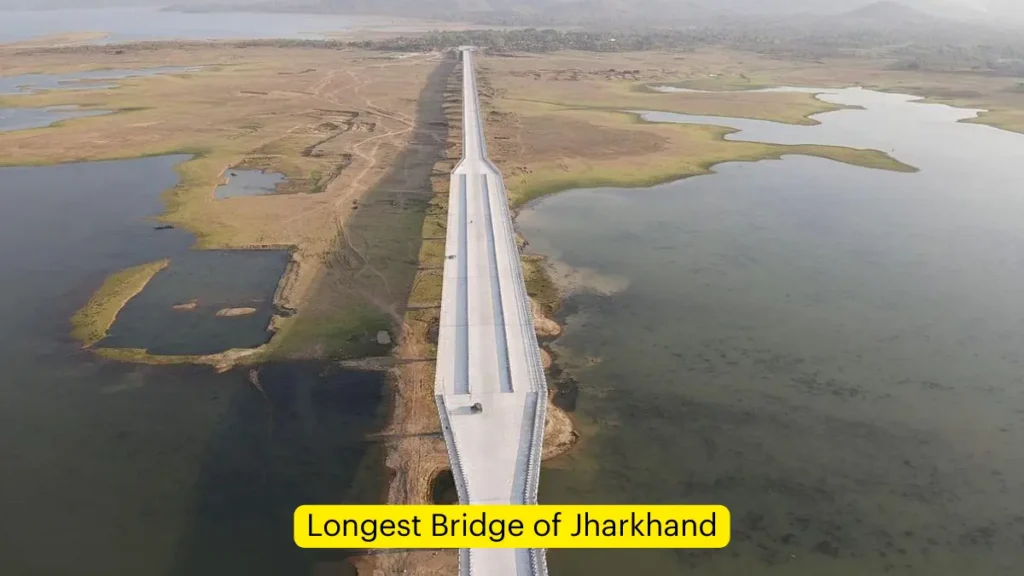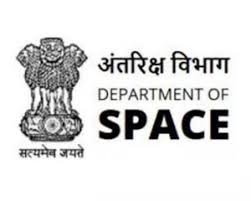Longest Bridge of Jharkhand: Netaji Subhash Chandra Bose Setu
In the heart of eastern India lies the state of Jharkhand, renowned for its rich mineral resources and diverse landscapes. Among its many infrastructure marvels stands the longest bridge in the state, the Netaji Subhash Chandra Bose Setu, also known as the Ranchi-Patratu Dam Road Bridge. This article delves into the details of this impressive structure and its significance for the region.
The Bridge at a Glance
Name and Location: The Netaji Subhash Chandra Bose Setu spans across the Patratu Dam Reservoir in the Ramgarh district of Jharkhand.
Key Facts:
- Length: 2,764 meters (approximately 1.7 miles)
- Width: 12 meters
- Lanes: 4-lane carriageway
- Construction period: 2012-2018
- Cost: Approximately 325 crore rupees
The Engineering Marvel
Design and Construction: The bridge is a modern cable-stayed structure, designed to withstand the challenging terrain and weather conditions of the region. Its construction involved the use of high-strength concrete and steel, innovative cable-staying technology for better support, and environmental considerations to minimize impact on the reservoir ecosystem.
Challenges Overcome: Building such a long bridge over a water body presented several challenges, including ensuring geological stability in the reservoir bed, dealing with monsoon rains and high winds, and transporting materials to the remote location.
Significance for Jharkhand
Improved Connectivity: The bridge has significantly reduced travel time between Ranchi and Hazaribagh, benefiting commuters, businesses, and tourists by providing faster, safer, and more efficient travel.
Economic Impact: The bridge has spurred economic growth in the region by attracting new industries, creating jobs during and after construction, and boosting tourism as the bridge itself has become an attraction.
Social Benefits: The bridge has improved access to healthcare, educational opportunities, and cultural exchange by facilitating easier travel between communities.
A Day in the Life of the Bridge
Morning Rush: The bridge comes alive with commuters from nearby towns and villages heading to work in Ranchi or Hazaribagh.
Midday Calm: The bridge experiences a lull during midday, with occasional trucks and tourists crossing. The panoramic views of the reservoir attract photographers and nature enthusiasts.
Evening Return: As evening approaches, the bridge again bustles with activity as commuters return home and others head out for social engagements in the cities on either side.
Maintenance and Future Plans
Regular Upkeep: To ensure the longevity of this crucial infrastructure, regular maintenance is carried out, including structural inspections, surface repairs, and checks on lighting and safety features.
Future Enhancements: There are plans to further enhance the bridge and its surroundings, including beautification projects, viewing platforms for tourists, and the integration of smart technology for traffic management.

Why This News is Important
Infrastructure Development: The Netaji Subhash Chandra Bose Setu represents a significant milestone in infrastructure development in Jharkhand, showcasing advanced engineering techniques and materials.
Economic Growth: The bridge is a catalyst for economic growth, attracting new industries and boosting tourism, which is crucial for the development of the region.
Improved Connectivity: By reducing travel time between key cities, the bridge enhances connectivity, which is vital for the social and economic integration of the region.
Social Impact: The bridge improves access to healthcare and education, fostering better living conditions and opportunities for residents.
Strategic Importance: This infrastructure development highlights the strategic importance of Jharkhand in India’s overall growth narrative, reinforcing its position as a vital link in the country’s development.
Historical Context
Background: Jharkhand, a state formed in 2000, has been focusing on infrastructure development to boost its economy. The Netaji Subhash Chandra Bose Setu, initiated in 2012 and completed in 2018, is part of this broader development strategy.
Related Projects: Similar infrastructure projects in India, such as the Bandra-Worli Sea Link in Mumbai and the Dhola-Sadiya Bridge in Assam, demonstrate the country’s commitment to improving connectivity and fostering regional development.
Economic Policies: The construction of the bridge aligns with India’s broader economic policies aimed at enhancing infrastructure to support industrial growth, improve logistics, and promote tourism.
Key Takeaways from the Netaji Subhash Chandra Bose Setu
| Serial No. | Key Takeaway |
|---|---|
| 1 | The longest bridge in Jharkhand spans 2,764 meters. |
| 2 | It significantly reduces travel time between Ranchi and Hazaribagh. |
| 3 | The bridge is a modern cable-stayed structure. |
| 4 | It boosts economic growth by attracting industries and tourists. |
| 5 | Regular maintenance ensures its longevity and safety. |
Important FAQs for Students from this News
1. What is the Netaji Subhash Chandra Bose Setu?
The Netaji Subhash Chandra Bose Setu is the longest bridge in Jharkhand, spanning 2,764 meters across the Patratu Dam Reservoir in the Ramgarh district.
2. Why is the bridge significant for Jharkhand?
The bridge significantly improves connectivity between Ranchi and Hazaribagh, boosts economic growth by attracting industries and tourists, and enhances access to healthcare and education.
3. What are the main features of the bridge?
The bridge features a 4-lane carriageway, is 12 meters wide, and is a modern cable-stayed structure built using high-strength concrete and steel.
4. When was the bridge constructed?
The construction of the Netaji Subhash Chandra Bose Setu began in 2012 and was completed in 2018, with a total cost of approximately 325 crore rupees.
5. How does the bridge impact daily life in the region?
The bridge reduces travel time, facilitates easier movement of goods and people, and has become a landmark that attracts tourists and photographers.
Some Important Current Affairs Links

















